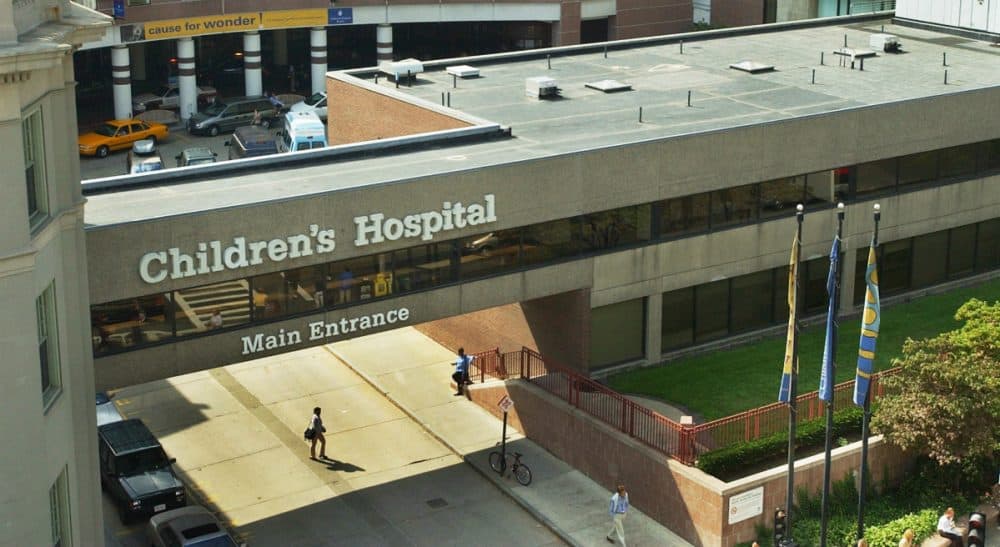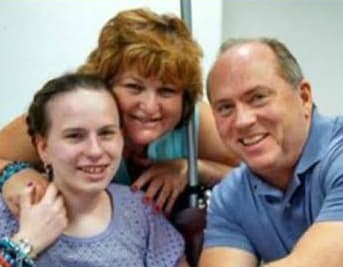Advertisement
Justina Pelletier And The Complexity Of Rare Diseases

After a year spent at the center of contentious medical and legal twists, a judge has placed Justina Pelletier in permanent custody of the state of Massachusetts.
Pelletier is a 15-year-old Connecticut teenager whose odyssey began when her medical team at Boston Children’s Hospital disagreed with the diagnosis of mitochondrial disease, a rare genetic disease that Pelletier’s older sister is also diagnosed with, she had received at nearby Tufts Medical Center. They attributed her pain, fatigue and gastrointestinal problems to a somatoform disorder, or a mental health condition. Arguing her parents subjected her to unnecessary and invasive medical tests, the hospital subsequently placed Pelletier in a psychiatric ward, and filed a medical abuse complaint with the state Department of Children and Families. This resulted in DCF taking custody of the teen and a cessation of medical treatment, save psychiatric treatment.
It’s a troubling case from many perspectives. For rare disease patients and advocates, however, the Pelletier case is especially sobering, and it illustrates the ongoing complexity of diagnosing and treating these diseases.

Nearly 30 million Americans live with an estimated 7,000 rare diseases, but due to relatively small patient populations — technically a rare or orphan disease is one that affects fewer than 200,000 people — most have not heard of them. An estimated 80 percent of rare diseases are genetic. Most physicians simply don’t see rare diseases often enough, contributing to the difficulty in appropriately identifying and treating them. Research suggests rare disease patients wait an average of seven years to receive proper diagnoses.
I know the reality behind these statistics. My journey to being diagnosed with primary ciliary dyskinesia (PCD) translates into 23 years of sickness, hospitalizations, surgeries and living with the long-term side effects of strong drugs that didn’t improve my health since they weren’t treating the real problem. I think of the other undiagnosed and misdiagnosed patients out there, imagining how many times they have been told they “should” be improving, how many times they have become the objects of skepticism and doubt.
It was exhausting being a medical mystery, having to defend and prove my respiratory and immune problems. Turns out, the reason I wasn’t improving wasn’t in my head at all. I was fortunate. I found a physician who was able to look at my history from a different angle, and along with a lifetime of clinical observations, I now had concrete biopsy results. My physical health improved as I implemented preventive treatments and changed medications, but so did my emotional health.
Mitochondrial disease is confounding to diagnose in its own right. It is a genetic disorder that affects cellular energy production. It can affect the brain, kidneys, heart, eyes and ears, and can lead to loss of muscle control, muscle weakness and pain, gastrointestinal complications, difficulty swallowing, respiratory complications and more. Diagnosis is made from a combination of imaging, biopsy, lab results and clinical observations. But even with the most experienced specialists and testing facilities, it is still extremely difficult to spot. In fact, because the symptoms are so widespread and some of the interventions so intrusive, it is not unheard of for families of patients with mitochondrial disease to be accused of medical abuse.
For as much as medical science can tell us, we also need to be willing to admit how much we still don’t know.
We are at a compelling intersection. On the one hand, genetic testing and other innovations have yielded more information than we’ve ever had about rare diseases. Armed with social media, patients can now connect with one another to share information on research, caution and anecdotal wisdom. This social connection that was once nearly impossible for rare disease patients — the only other PCD patient I’ve ever met in real life is someone I met in an online group — is now an important part of progress.
Yet much work remains. According to some industry figures, less than 5 percent of rare diseases currently have FDA-approved therapies. Beyond the incredible expense of many of the treatments that do exist, health care coverage itself can be difficult given the lack of standard guidelines on rare diseases.
More than that, too many patients continue to languish in diagnostic limbo. Tests and treatments are only effective when they are applied to those who need them, and that is where a critical gap exists. Complicated cases like Justina Pelletier’s remind us that a key to better outcomes is something much more profound: For as much as medical science can tell us, we also need to be willing to admit how much we still don’t know.
Related:
